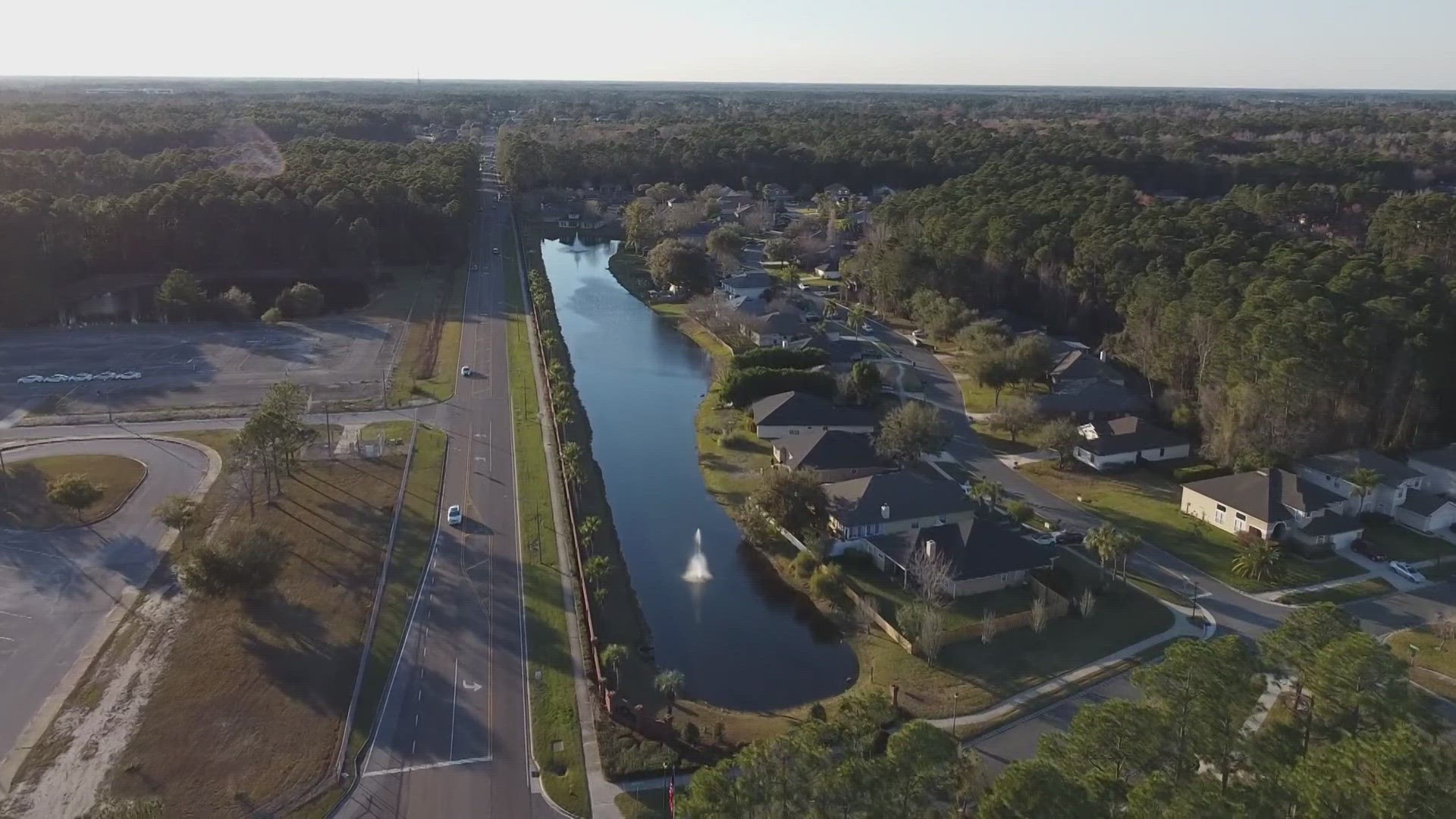JACKSONVILLE, Fla. — A traffic study projects a controversial proposed Chick-fil-A in Jacksonville's Oceanway area will have no negative impact on traffic.
Chick-fil-A paid for the 600-page study. It pulled traffic data from six Chick-fil-A locations in Jacksonville and projects the Oceanway Chick-fil-A will generate 294 trips during the breakfast rush, 468 trips during peak lunch hours, and 316 visits during the busiest dinner time.
The study also projects the restaurant will be able to contain its traffic within the parking lot of the restaurant and will not spill out onto Lady Lake Road and Duval Station Road.
Below is an excerpt from the study:
- Using the data collected at the six (6) Chick-Fil-A restaurants, the on-site 95th percentile queue length for the restaurant’s drive-thru was determined to be 38 vehicles or fewer. As a result, the proposed double drive-thru lanes will accommodate 19 queued vehicles per lane and provides sufficient storage.
“It's a long study to get through," neighbor Christine Brundage told First Coast News.
Brundage lives in the neighborhood where the Chick-fil-A will be located in.
“We're not traffic engineers," she said.
Brundage read the report, all 600 pages. She said she hesitated when she got to page 9.
“It describes Duval Station Road, which is one of the main roads that we're talking about here, as a four lane, median, divided, major urban connector, it makes me question all of the calculations," Brundage said.
Below is the excerpt from page 9:
- Duval Station Road is a four-lane median-divided Urban Major Collector with a posted speed limit of 40 MPH within the vicinity of the study area (45 MPH east of Starratt Road).
Duval Station Road is right in front of the proposed Chick-fil-A, and the majority of it is a two-lane, double yellow line road.
Brundage feels the report makes the road seem wider than it really is.
“When you start with an assumption that the road is a four-lane road, I equate that to a 32-ounce bottle, there's a certain amount that can fit into that 32-ounce bottle," Brundage said. "When you actually have a 16-ounce bottle, you can't expect the same amount that's in that 32-ounce bottle to fit in that 16-ounce bottle."
Brundage and other neighbors have more questions about the study, including why it did not pull data from the nearest Chick-fil-A at the River City Marketplace. They have six days to do more research before they plead their case at next week’s land use and zoning (LUZ) meeting.
“Now, we're starting to do some research to see where the city engineers are [at]," City Councilmember, Raul Arias said.
Arias is on the LUZ committee and met with Chick-fil-A on Wednesday to go over the study.
"Chick-fil-A definitely conveyed their study to us and explained to us how this will be a good fit for the neighborhood," Arias told First Coast News. "However, clearly, we haven't had a committee work yet to discuss this and debate it. But, the study came back in a way that showed that it would not be an issue for that particular site."
Arias added that he will also visit the neighborhood before Tuesday's meeting, prior to deciding if Chick-fil-A fits in the neighborhood or, if it's 32 ounces of traffic in a 16-ounce bottle.
“We live here. We know what this will do," Brundage said. "We don't have to have some flawed science or flawed math tell us what is actually going to happen."
The city of Jacksonville said its traffic experts are in the process of looking at the study.
If the proposal is voted on next week by the LUZ committee, it will then head to April 23rd's city council meeting for final approval.

